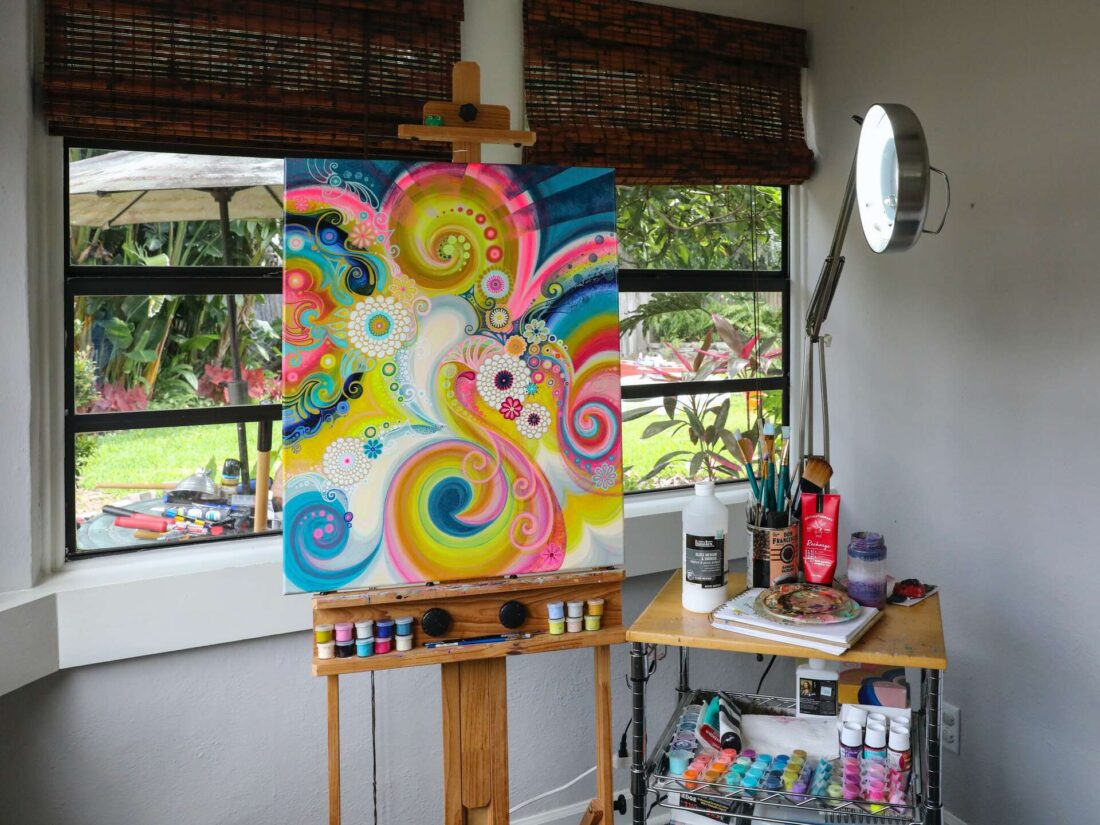If you are a talented painter or an avid art lover in the middle of a relocation, there is a high chance that you might be wondering how to pack paintings for moving? First thing first, make sure you have enough supplies and special materials to protect your delicate objects. Use bubble wrap, paper, and sturdy crates to ensure the safety of your belongings. And don’t be afraid to ask a professional moving company for help. They can provide you with a trained crew that will handle everything while you settle in your new home. Lastly, don’t forget to get insurance. Even though accidents are not likely to happen, it is better to be safe than sorry when it comes to valuable works of art.


How to Pack Paintings for Moving – Resources You Need
You know that protecting your items without adequate supplies is almost impossible. So before you get to boxing up, take care of the first step – collect all the supplies you need.
Take a walk around your home and make a home inventory – it will help you with figuring out how much of the supplies you need. The amount of materials is an essential thing to know when making a budget.
If you are hiring a company that offers packing and unpacking services, you won’t have to worry about materials. Usually, the crew provides you with boxes and packing supplies needed for protecting your belongings.
But if you are planning a DIY adventure, you will need to obtain:
- Boxes
- Different filling materials like paper and foam peanuts
- Tape
- Markers
- Bubble and plastic wraps
When you get all of these, especially if you are boxing up a fragile work of art, you will need specialized materials that provide an additional level of safety to all of your items.
Get Sturdy Moving Boxes
Are you still on the fence about whether to use bubble wrap or packing paper to protect your pictures? Depending on the piece you are boxing up, you might need both. Whatever you choose, make sure that you put your delicate belongings in specialized boxes. Sturdier containers can be made out of thicker cardboard or even wood. A wooden crate is a perfect solution for protecting your fragile and valuable things.
Relocating Framed Artwork
If you are planning on boxing up everything by yourself, start with framed artwork. You will need to put all of the obtained material into good use. The sturdy boxes you choose should be at least three inches bigger than the painting itself. The free space will accommodate layers of protective materials like packing paper or bubble wrap.
If your framed artwork is protected by glass, make sure you tape an X over it. The tape will absorb small vibrations during the move, making sure that the glass doesn’t break. Put your item between two foam boards and tape it together. Then, put a sheet of paper or bubble wrap around it. Before placing it in a box, add cardboard corner protectors. When the item is safely tucked in the box, fill the space with padding material, and seal it shut. Don’t forget to write “FRAGILE” on at least two sides of the box.
How to Pack Larger Paintings
Do you have large pictures in your house which you would like to take with you to the next home? If the objects are larger than 48”x48”, you should use wooden crates to transport them.
If you are using professional moving services, you won’t need to worry about handling heavy boxes and using the right materials. But if you are doing it yourself, take every precaution to ensure the safety of your delicate belongings.
Use foam boards and bubbles to prevent moisture damage to your pictures. Also, use cardboard corners to secure frames. When you are satisfied with the way you protected your objects, place them in crates and mark them correctly. This is something you should do when handling all of your delicate items, from packing a mirror to preparing to move a grandfather clock.
Preparing Smaller Pictures for Transport
Handling pictures smaller than 48”x48” has some of the same steps as protecting larger ones. You need to avoid touching the canvas with bare hands – use cotton gloves when handling them. Protect the painting with protective materials, and don’t forget to put cardboard corners on the frame.
Using bubble wrap is essential if you are planning on using a storage service and leaving your artwork in the facility. Having these plastic bubbles around your objects will protect them from moisture, climate differences, and other influences. When stacking smaller framed objects, you can put more than one in the box, but make sure that in the end, the box is not too heavy to lift.


Packing Rolled Canvas
Do you have any pictures that are not framed? Even without the wooden structure, you should pay special attention to boxing them up.
If this is a new piece of art, make sure that the canvas is completely dry. After that, put it between two sheets of paper, making sure that the whole surface is covered. Roll up the canvas, but be careful that you don’t roll it too tightly. Put bubble wrap around it to protect it from moisture and seal it with tape. Put the roll in a mailing tube and fill the space with padding materials. When you are done, seal the tube shut and put a sticker that marks it as fragile.


Shipping All Art-Related Pieces
If you are an art enthusiast, you probably have more than just paintings in your home. Relocating all art-related pieces safely to your new home should be a top priority. If you leave it to a good relocating company, you can rest assured that all of your objects will be handled with care.
Maybe you have some large and small sculptures that need shipping? If you are relocating them all by yourself, you will want to protect them properly, and put them in sturdy crates to ensure they don’t break.
But if you are using a company, the crew of trained professionals will not only pack everything you have, but they will load your artwork on the truck. Picking the right company is half of the work when it comes to relocation. And remember – if you are willing to hire auto transport services and let movers handle your car, why not let them handle your art as well.
Insurance
Relocating your valuable artwork should not be done without insurance. You never know what kind of accident might happen during the move, and even though the chances for it are pretty small, you should always have insurance.
If you are relocating on your own, insuring your objects is up to you. But if you are using a company, make sure that they offer you good insurance policies for all of your belongings.




